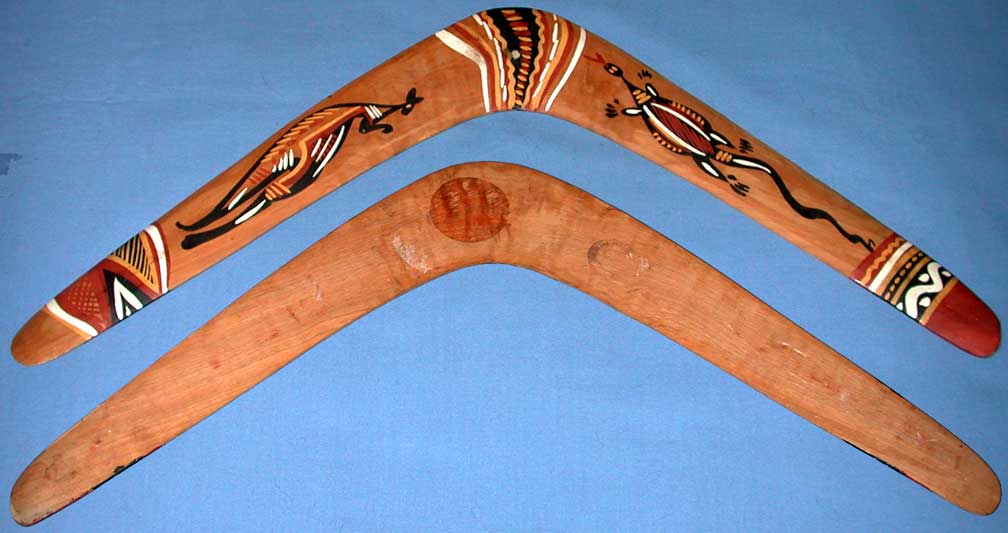Item TB69
This item was sold on 29 June 2007
for $49
Similar artifacts for sale are often found on the Aboriginal
Boomerangs web page.
Historical Pricing information for this item and similar artifacts can be found at: Historical Artifact Prices
|
This is a large and well made returning style boomerang with Aboriginal art decorations. The grain flows along the contour of the blades and the airfoiling is fairly good. This one might be capable of a return flight if thrown carefully. The artwork is very good and the paint matches traditional natural pigment colors. The reverse side has a mark showing a lost circular trade label. There is also remnants of what may be a Queensland government authenticity stamp. This one was probably made in the 1960s. This boomerang is in excellent condition with no edge chips and only a small blemish to the paint at the center of elbow. This one would display well on the wall. Span = 57 cm. Weight = 162 gm. Australian Aborigines are well known for making boomerangs. The majority of the Aborigines had the technology to make throwsticks, or non-returning boomerangs. Only a small percentage of the tribal groups knew how to make true returners and most of these came from the eastern coastal regions of Queensland, New South Wales and Victoria. During the past century, the majority of the Aborigines came out of the bush and were somewhat assimilated into the European man's culture. Many Aborigines began making returning style boomerangs to sell to tourists. The earliest ones were well made out of natural timber and with the grain following the curvature of the boomerang. Today, most hardwood boomerang are cut out of a large board and the grain is usually straight and running parallel to a line spanning the tips of the blades. Boomerangs that are made with the grain following the contour of the blades are much stronger and more valuable. In addition, some boomerangs have good airfoiling. The majority do not. Most "tourist boomerangs" have painted upper surfaces that display Australian animals and decorative lines and/or geometric patterns. Most pre-contact returners have no artwork or the artwork is simple and scratched into the surface. It is easy to tell the tourist boomerang from the valuable ethnographic artifact. However, tourist boomerangs that are made properly with the grain running along the contour and with good airfoiling and art work do have good collectable value, especially if they are made by a famous Aboriginal artists, like Bill Onus or Joe Timbery. |

Back to: Collectable Artifacts | Aboriginal Boomerangs | Historical Artifact Prices | Primitive Technology | contact: Ted Bailey